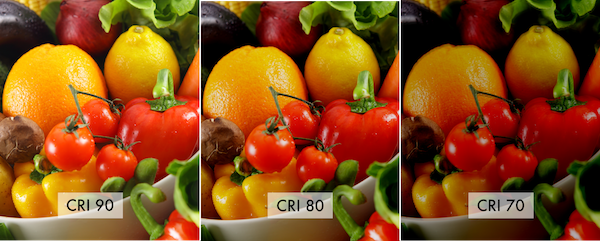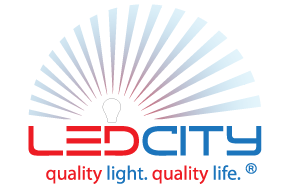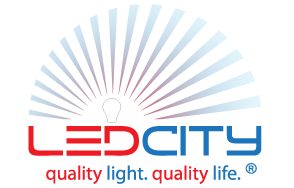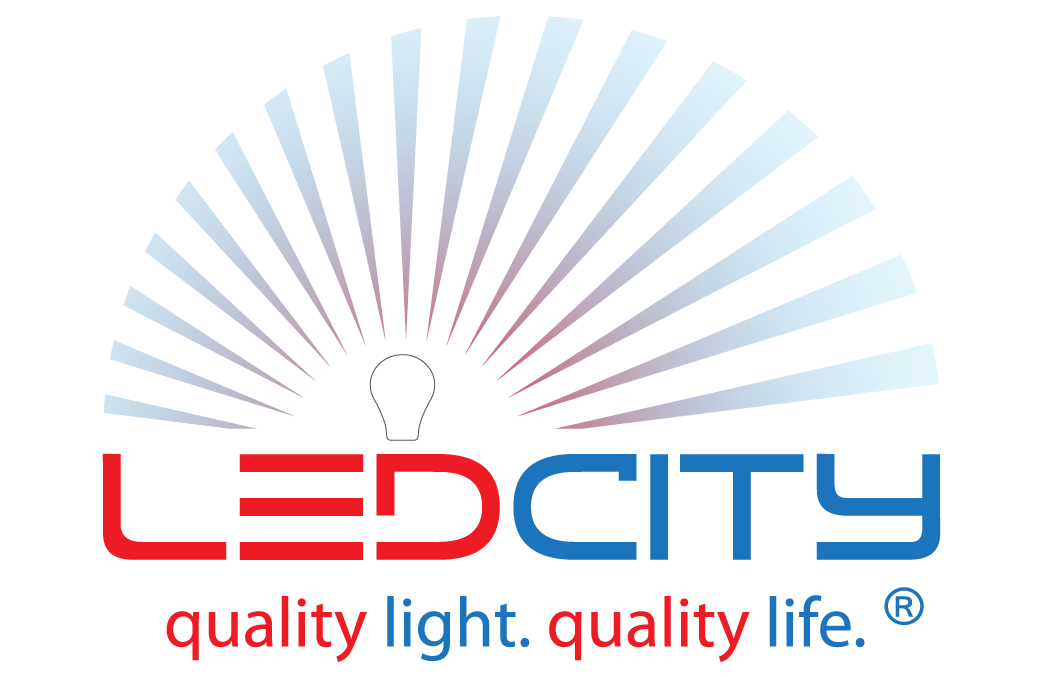How to Choose LED Track Lights

Because of its versatile, flexible, and stylish properties, LED track lighting is probably the most popular illumination method for contemporary lighting projects. LED track lights are found in both commercial and residential lighting projects. Track lights are characterised by having a length of track that holds a number of LED light bulbs. This is a highly versatile form of lighting that can be cut, curved and adjusted on the fly to meet your lighting needs on an ongoing basis.
One of the main advantages of track lighting is that power is supplied through wires that run inside the track itself. This means that not only does each individual light not need its own power source, but it makes it a lot easier and quicker to install and replace. Another beauty of this type of fitting is that they provide a line of light - in turn creating a strong illumination - within a limited space. In addition, LED track lighting provide powerful directional light at a fraction of the energy cost and it lasts anywhere from 10,000 to 100,000 hours, which means you'll rarely have to replace the bulbs in installations that can sometimes be tucked away in hard to access areas.
There are various forms of LED track lighting and in addition, this form of lighting can be custom-made for your particular installation requirements.
Types of Track Lighting
There are quite a few different types of LED track lighting systems available on the market. You will make a choice based on the look you want your individual track lighting project to take.
Track Heads
Track heads are normally used for spot lighting, wall wash fixtures, ambient fixtures and applications where you need directional light. This type of light is a perfect solution for task and accent lighting projects. Common types of track heads include:

-
Flat and Round back head
With flat or round back heads that come in different shapes including cylinder, octagon, and oval, you can give your LED track lighting installation a sleeker, more modern feel. It's appropriate for more modern, minimalist LED track lighting designs.
-
Tornado head
Tornado heads have solid backing, which gives them a more industrial look. They can be used in contemporary lighting installations.

-
Gimbal head
Centre fittings can swivel 180 degrees to create a spotlight beam exactly where you want it. This can be an advantage if you want to adjust accent lighting toward a design feature or a piece of art. This fixture's open design and small trim make it have a similar look to a movie camera light.

-
Step head
This is the traditional look for track lighting installations. It provides an abundance of light and sophistication to your interior space.
Track Pendant
While track pendants make highly attractive installations, they're generally a bit more limited in directionality than track heads. They're best used in applications where you need task lighting in areas such as an office or a kitchen. They can also be applied as an ambient light source.

Track systems
When choosing a track lighting system, you will first need to calculate the length of the track needed as well as the numbers of track lights required. A track light rail consists of a liner track, joints, and sometimes T-connectors. Besides the track, you will also need to calculate the total wattage the circuit is capable of carrying and not exceed this wattage (normally use up to 80% of the total allowed wattage).
Here are the most popular types of installations commonly installed in commercial and residential LED track lighting projects:
Linear
The standard form of LED track lighting comes in a linear system. There are two main categories of linear systems we will cover: single-circuit and three-circuit tracks.
- Single-circuit systems
This is the more straightforward LED track lighting system. All the lights in this system are on a single circuit, so when you turn on the lights, all the LEDs in the system will turn on together.
H-wiring system:
Also referred to as three-wire single circuit system, the H (Halo) system track light features two runs of wire on one side of the track and one run of wire is found on the other side. On its accompanying junction plate, you will have two-clip terminals on one side of the plate with a one-clip terminal found on the other side.
J-wiring system:
Sometimes referred to as a two-wire wide single circuit system, J (Juno) system track lighting will include one run of wire on either side of the track. Both sides on the back of the junctions plate should have a terminal clip.
L-wiring system:
At times referred to as a two-wire narrow single circuit system, L (Lightolier) system track lighting will include one strip of wire on both sides of the track, and a clip terminal on the two sides of the junction plate.
- Three-circuit system
The three-circuit system enables up to three lighting configurations to be set up on one track with three switches for each circuit that controls each of the three lighting configurations individually. This is the most dynamic track lighting system and is commonly found in professional display environments.
Monorail
This type of installation features pre-curved tracks that give an extra decorative splash to the lighting fixture. Monorail track lights can use any type of H-, J- or L-system wiring.
Flexrail
These type of installation can use H-, J- or L-type wiring, but are more versatile than the other options. As opposed to linear and monorail tracks, you can curve these tracks to fit the exact dimensions of your architectural space. For example, a common use would be using this style of track to match the shape of a curvy kitchen island.
Types of Installations
Track lighting can be installed on concrete or false ceiling. Further, it can also be installed on the wall, in accordance with your interior lighting designs. Track lighting can be bendable and designed to navigate curves on ceilings and walls, and you can add extra length and/or track heads to ensure full coverage, at a later time. When it comes to operation and maintenance, LED track lighting is extremely easy to adjust the position of the light with track heads and no other lighting system is easier to replace the defective light fittings. All of these are the reasons why track lighting is so popular in retail stores, showrooms, hotels, restaurants, and even residential environments.
Important Specs of LED Track Lights
Beam Angle

In order to illuminate the object area with bright and evenly-distributed light, it is important to know the beam angle of the track lights used, the distance between track lights and the object, as well as how large the object area is. It is rather difficult to give an exact formula to work out on what beam angle is required for a lighting project, however, you can refer to the table below for the recommended beam angle - based on the object size and the distance between track lights and the object:
| Distance | Object Size | Beam Angle |
|---|---|---|
| 1 m | 1 m (diameter) | 50° to 60° |
| 1.5 m | 1 m (diameter) | 35° to 50° |
| 2 m | 1 m (diameter) | 25° to 35° |
| 3 m | 1 m (diameter) | 15° to 25° |
Correlated Colour Temperature (CCT)

The CCT is a measure of light's colour in Kelvin (K) degrees. There are many different definitions of colour temperature used in the lighting industry, some are even contradicting. And here at LEDCITY, we define outputs of 2600K to 3700K as "warm white" (more yellow / red), 3700K to 5000K as "neutral white", and 5000K to 8300K as "cool white" or "daylight" (more blue). Studies have shown that light colour affects our daily sleep cycles and mood. Cooler colours promote wakefulness and productivity, while warmer colours tend to promote relaxation. In retail industries, retailers tend to use cooler colours for mental or hardware products while use warmer colours for food and clothing. A tip is to stick to just one colour throughout an open area, as otherwise, the mixing of colours could be distracting to the eyes.
Colour Rendering Index (CRI)

The Colour Rendering Index (CRI or also denoted as Ra) is a measure of light’s ability to properly render colour (ranges from 0 to 100 - the highest possible score). Colour rendering is important especially for commercial applications in order to reveal true and vivid colours of the products, artworks or architectural elements that are of interest.
The following table shows the quality of Colour Rendering Index:
Ra = 90 - 100 Excellent
Ra = 80-90 Good
Ra = 60 - 80 Moderate
Ra < 60 Poor
Applications
Mostly used for accent or task lighting, although sometimes also used for decorative lighting, LED track lights are especially popular in showrooms, galleries, and retail shops for commercial projects and in kitchens, hallways, and bedrooms in the home.

Accent Lighting
One of the most common and effective uses for LED track lighting is to highlight logo, art, and architectural features of interest. By using LED track lighting, you have complete freedom to create the exact lighting effect you're trying to achieve. Position and aim the accent lights precisely, and if the objects you wish to illuminate change position, you can easily redirect the light by adjusting the track heads. LED track lights are an extremely versatile and attractive solution for creating accent lighting in showrooms, commercial displays, home, and more.

Task Lighting
By placing the tracks directly over a retail or work space, you can create highly effective task lighting. As an added bonus, by using pendant lighting, you can make the task lighting installation not just useful but turn it into a decorative feature in the room as well. Many customers choose LED track lights to offer task lighting in kitchens, offices, bars, and restaurants.

Decorative Wall Wash Lighting
Locating lights every two or three feet parallel to a wall can provide a spectacular wall washing effect. Another option is to intersperse the wall washing track lights with accenting to create a focus on art pieces hanging on the wall. Textures in the wall can be brought out by placing the tracks behind a fascia covering.











